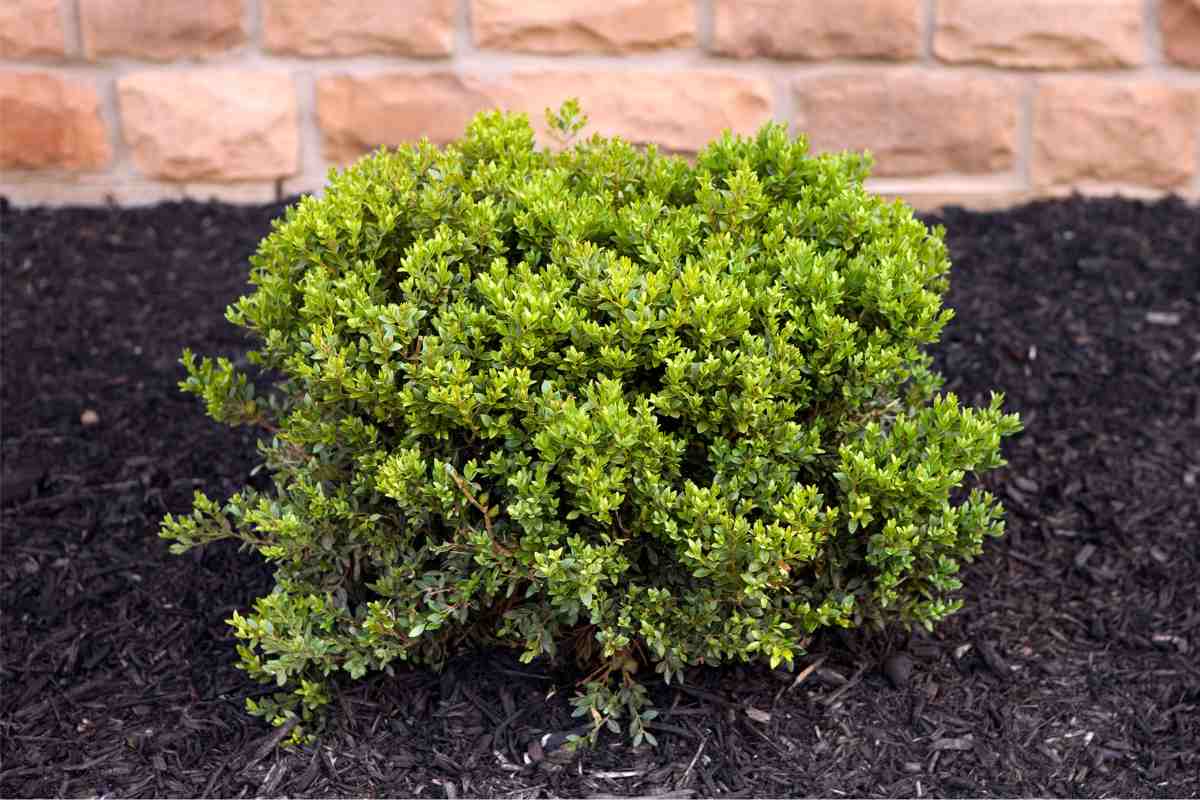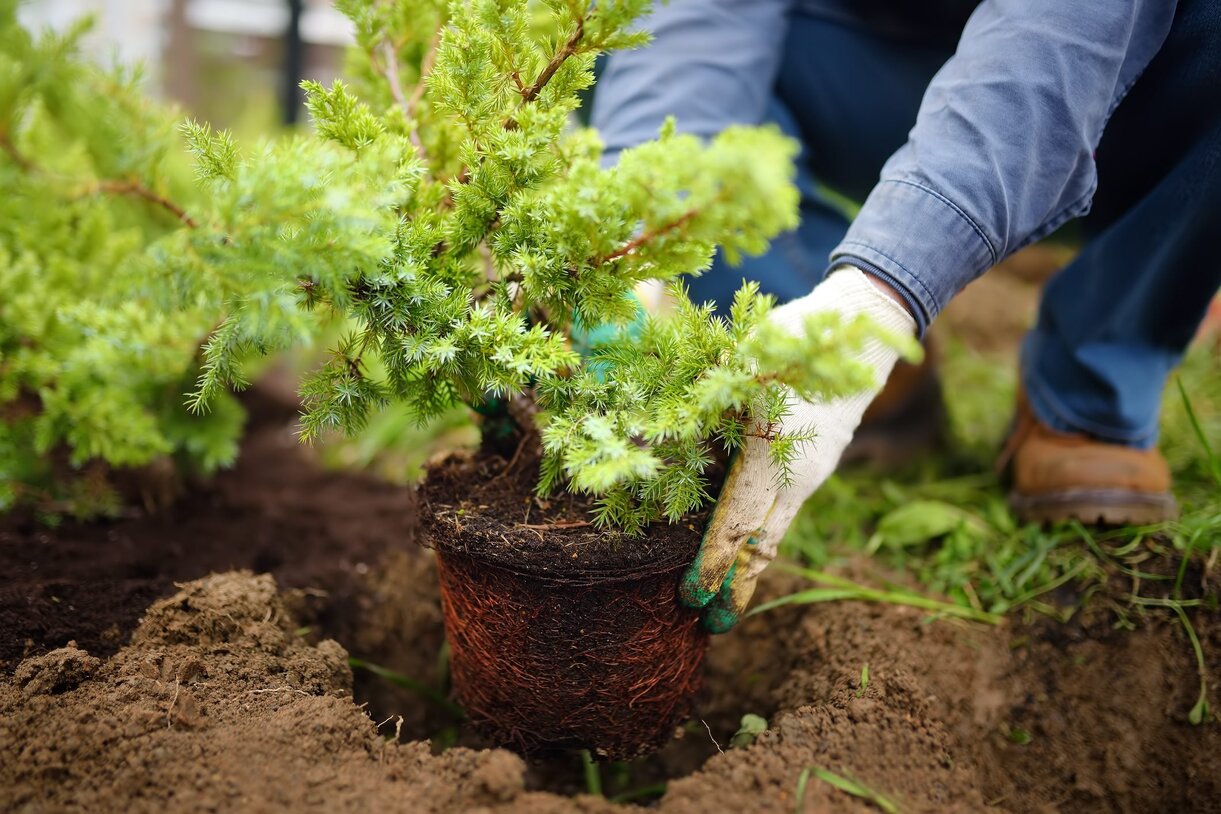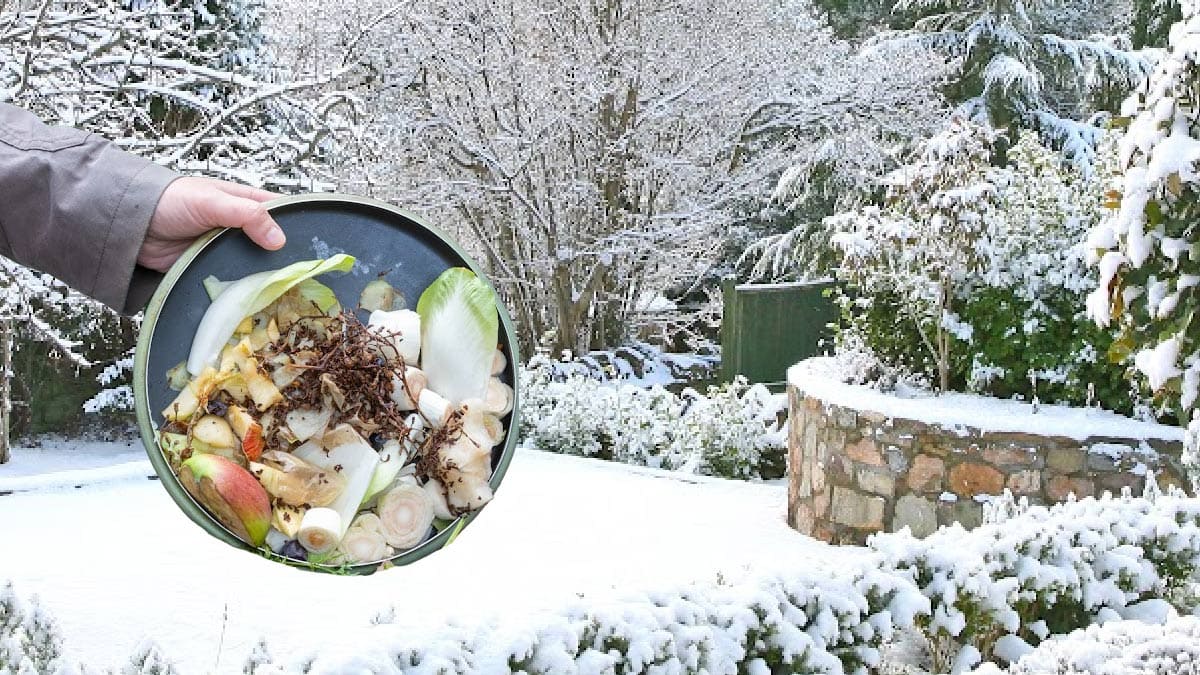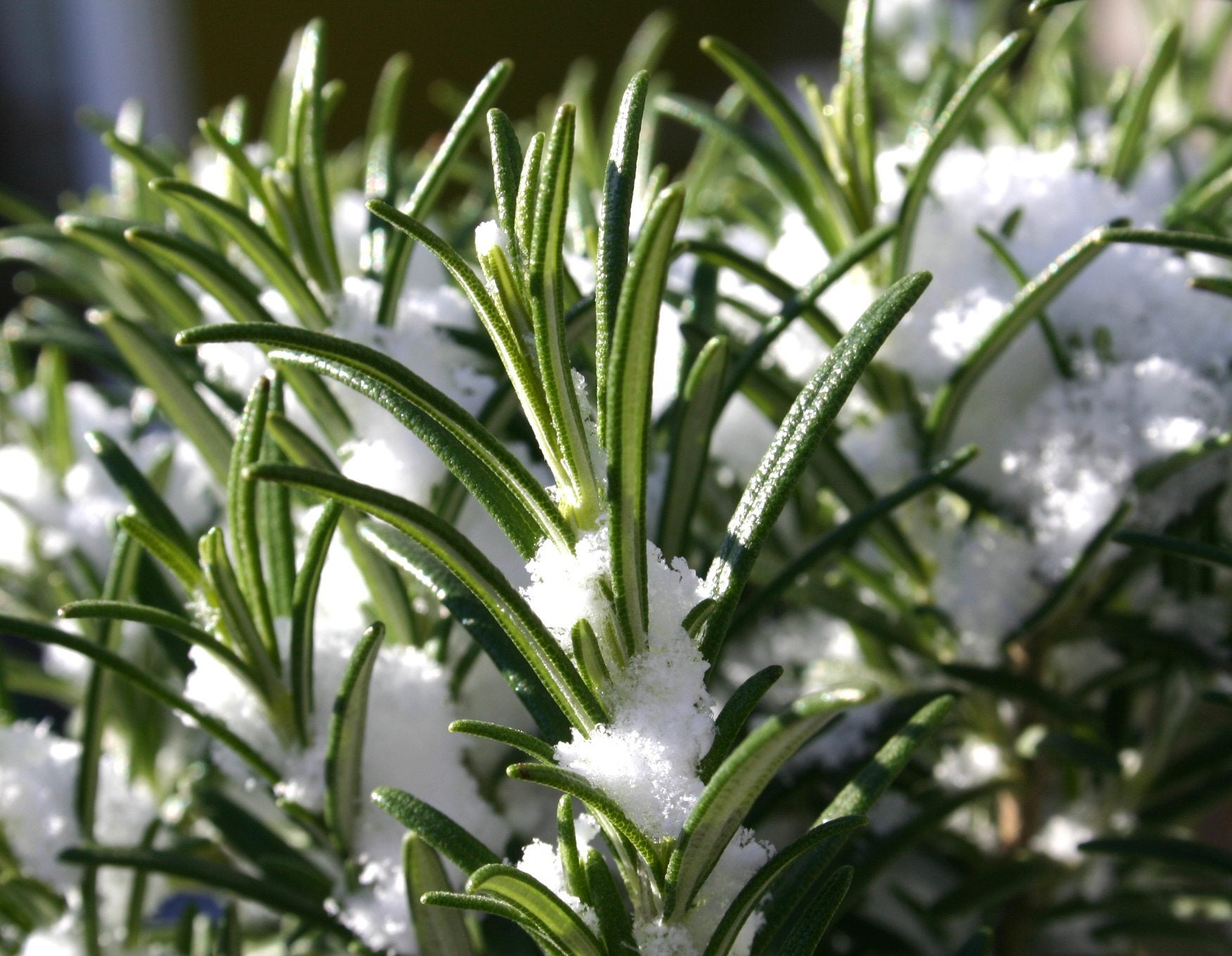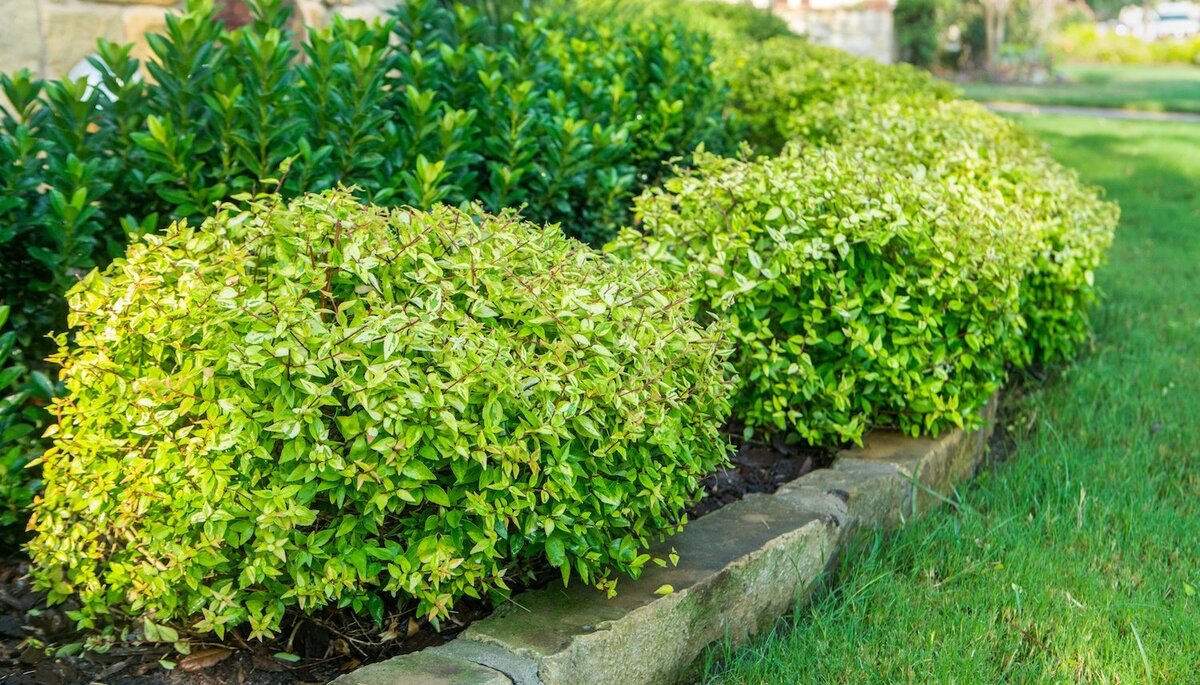Home>Gardening Techniques>Plant Care>How To Winterize Plants And Shrubs
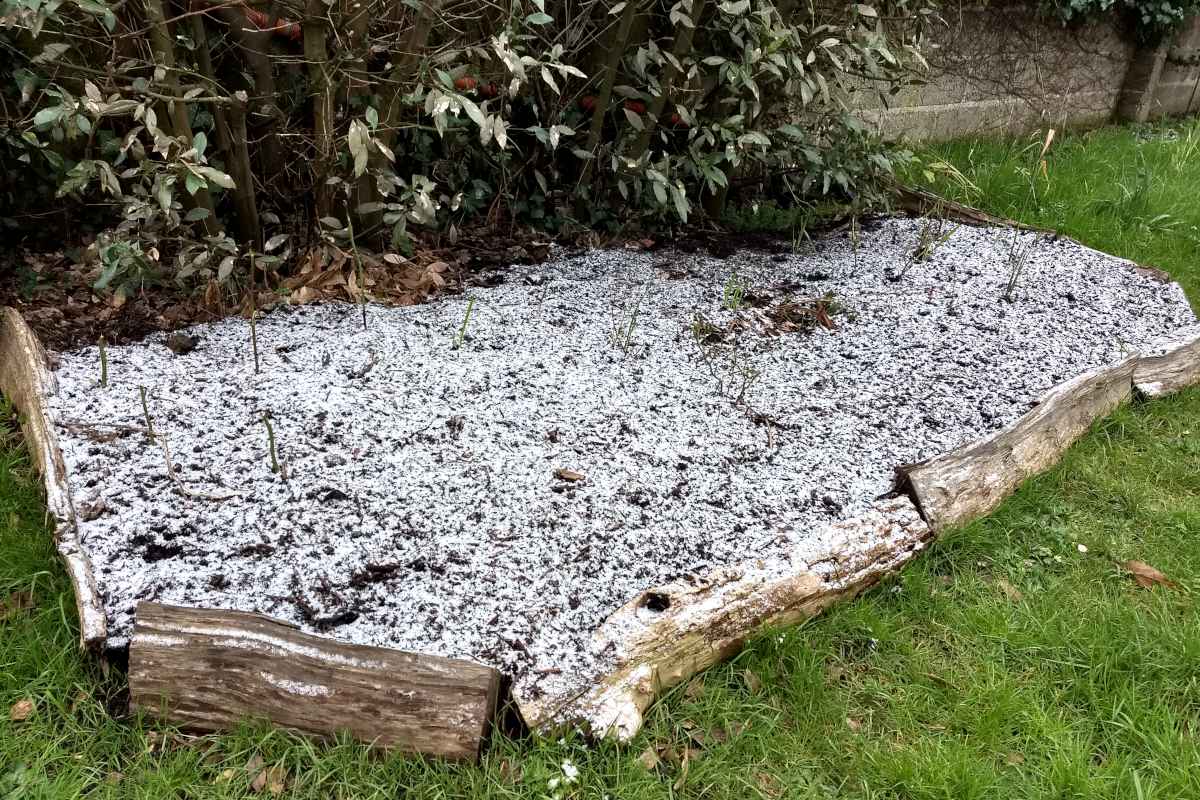

Plant Care
How To Winterize Plants And Shrubs
Modified: January 22, 2024
Learn how to properly winterize your plants and shrubs with our comprehensive plant care guide. Protect your plants from frost damage and ensure their survival through the cold winter months.
(Many of the links in this article redirect to a specific reviewed product. Your purchase of these products through affiliate links helps to generate commission for Chicagolandgardening.com, at no extra cost. Learn more)
Table of Contents
- Introduction
- Why Winterizing Plants and Shrubs is Important
- Timing for Winterizing Plants and Shrubs
- Steps to Winterize Plants and Shrubs
- Clearing and Cleaning the Beds
- Pruning Dead or Diseased Branches
- Mulching Around the Plants and Shrubs
- Wrapping and Protecting Plants and Shrubs
- Watering Before Winter Sets In
- Monitoring and Attending to Plants and Shrubs During Winter
- Conclusion
Introduction
As the seasons change and winter approaches, it’s important to take steps to protect your plants and shrubs from the harsh conditions. Winterizing your plants and shrubs not only ensures their survival but also helps them thrive when spring arrives. By preparing them for the cold temperatures, winds, and frost, you can safeguard against damage and promote optimal growth in the coming seasons.
Winterizing your plants and shrubs involves a series of steps that include cleaning and clearing the beds, pruning dead or diseased branches, mulching, wrapping and protecting the plants, and monitoring them throughout the winter months. While different types of plants and shrubs have specific requirements, there are general practices that can be followed to ensure their well-being.
In this article, we will explore the importance of winterizing plants and shrubs, the ideal timing for this process, and the steps you can take to protect them. Whether you are a seasoned gardener or a beginner, this guide will provide you with the knowledge and tools to keep your plants and shrubs healthy during the winter months.
Why Winterizing Plants and Shrubs is Important
Winterizing plants and shrubs is essential for their survival and long-term health. Here are some reasons why this process is so important:
- Protection against cold temperatures: Winter brings freezing temperatures that can cause significant damage to plants and shrubs. By winterizing them, you create a protective barrier that shields them from the harsh cold.
- Prevention of frost damage: Frost is a common occurrence during winter, and it can harm plants by causing ice crystals to form within their cells. Winterizing practices such as mulching and wrapping provide insulation and minimize the risk of frost damage.
- Preservation of root systems: Winterizing helps plants and shrubs maintain healthy root systems. By mulching and protecting the soil around their roots, you prevent freezing and thawing cycles that can damage these critical structures.
- Preparation for spring growth: Winterizing plants and shrubs sets the stage for vigorous growth when spring arrives. By taking care of them during the winter months, you ensure they are in optimal condition to thrive and bloom in the coming seasons.
- Prevention of disease and pests: Winter can expose plants and shrubs to various diseases and pests. Proper winterizing practices, such as cleaning the beds and pruning dead branches, help remove potential sources of infection and reduce the risk of pest infestations.
- Maintaining the aesthetics of your landscape: Winterizing your plants and shrubs helps preserve the overall beauty of your landscape. By protecting them from winter damage, you ensure that your outdoor space remains visually appealing even during the colder months.
By investing time and effort into winterizing your plants and shrubs, you not only protect your investment in your garden but also contribute to the overall health and well-being of your plants.
Timing for Winterizing Plants and Shrubs
The timing for winterizing plants and shrubs is crucial, as it ensures that they are adequately prepared for the impending cold weather. While the exact timing may vary depending on your location and climate, here are some general guidelines to help you determine when to begin the winterization process:
1. Consider the first frost date: The first frost date in your area is a good indicator of when to start winterizing your plants and shrubs. Typically, this is around the time when temperatures begin to drop consistently below freezing. Consult a local gardening resource or agricultural extension office to find out the specific first frost date for your region.
2. Watch for foliage changes: Observing the changes in your plants’ foliage can also provide insights into the appropriate timing for winterizing. When leaves start turning color and falling off, it’s a sign that plants are entering dormancy and preparing for winter. This is an ideal time to start the winterization process.
3. Keep an eye on the weather: Monitoring the weather forecast is crucial when deciding when to winterize your plants and shrubs. If a sudden drop in temperature or a frost is expected, it’s best to take immediate action to protect your plants. However, it’s generally recommended to start the winterization process a few weeks before the first frost date to ensure adequate preparation.
4. Consider the specific plant requirements: Different types of plants and shrubs have varying tolerance levels to cold temperatures. Some may require earlier winterization to ensure their survival, while others can withstand colder conditions for a longer period. Understanding the specific needs of your plants will help you determine the appropriate timing for winterization.
It’s worth note that it’s better to err on the side of caution and start winterizing a bit earlier rather than waiting too long. Remember, it’s easier to protect plants when they are still healthy and strong rather than trying to revive them once damage has occurred.
By considering factors such as the first frost date, foliage changes, weather forecasts, and plant requirements, you can determine the optimal timing for winterizing your plants and shrubs. Doing so will ensure that they are well-prepared for the challenges of winter and have the best chance of thriving when spring arrives.
Steps to Winterize Plants and Shrubs
Winterizing plants and shrubs involves a series of steps that aim to protect them from the harsh winter conditions. By following these steps, you can ensure the health and survival of your plants throughout the cold months:
- Clearing and cleaning the beds: Start by removing any fallen leaves, weeds, or debris from the garden beds. This helps prevent the buildup of disease-causing organisms and pests that can harm your plants during winter.
- Pruning dead or diseased branches: Inspect your plants and shrubs for any dead or diseased branches and prune them back. Removing these branches not only improves the plant’s appearance but also prevents the spread of disease and reduces the risk of breakage from heavy snow or ice.
- Mulching around the plants and shrubs: Apply a layer of organic mulch around the base of your plants and shrubs. Mulching helps insulate the soil, regulate temperature, retain moisture, and suppress weed growth. Use a thick layer of mulch, about 2-3 inches deep, but make sure to keep it a few inches away from the plant’s stem to prevent rotting.
- Wrapping and protecting plants and shrubs: For more delicate plants and shrubs that are prone to winter damage, consider wrapping and protecting them. Use burlap or horticultural fleece to create a protective covering around the plants, securing it with stakes or twine. This insulation helps shield the plants from cold winds and temperature fluctuations.
- Watering before winter sets in: It’s important to ensure that your plants and shrubs are well-hydrated before winter arrives. Give them a thorough watering, especially if rainfall has been scarce. This provides the plants with the necessary moisture to sustain them through the dormant period.
- Monitoring and attending to plants and shrubs during winter: Throughout the winter months, keep an eye on your plants and shrubs. Watch for signs of damage, disease, or pest infestations. If needed, remove snow that has accumulated on branches to prevent breakage, and promptly address any issues that arise.
These steps are general guidelines for winterizing plants and shrubs. It’s important to consider the specific requirements of the plants you have in your garden. Some plants may require additional protection, while others may be more resilient to winter conditions. By taking these measures, you provide your plants and shrubs with the best chance of surviving the winter and thriving when spring arrives.
Clearing and Cleaning the Beds
Before winter sets in, it’s vital to clear and clean your garden beds to create a healthy environment for your plants and shrubs. This step ensures that they are not competing with weeds for nutrients and minimizes the risk of disease and pest infestations. Here are the key tasks to include when clearing and cleaning your beds:
Removing fallen leaves and debris: Start by raking up any fallen leaves, twigs, or other debris from the garden beds. The accumulated organic matter can harbor pests and diseases, which may harm your plants during winter. Dispose of the debris properly or consider adding it to your compost pile.
Weeding: Thoroughly remove any weeds that have sprouted in your garden beds. Weeds compete with your plants for nutrients, water, and sunlight, and can hinder their growth. Pull weeds by hand or use appropriate gardening tools to remove them along with their roots.
Pruning dead foliage: Trim back any dead or dying foliage from your plants and shrubs. This includes removing withered leaves, spent flowers, and any damaged or diseased branches. This not only enhances the appearance of your garden but also prevents the spread of diseases and allows the plant to focus its energy on healthy growth.
Cleaning containers: If you have plants in containers, make sure to clean the pots thoroughly before winter. Discard any dead or diseased plants, remove the old soil, and wash the containers with warm, soapy water. This helps eliminate any potential sources of pests and diseases that could affect your plants in the next growing season.
Sanitizing tools: As you clean and clear your garden beds, don’t forget to sanitize your gardening tools. Use a mixture of water and household bleach to disinfect your tools, especially if you have pruned any diseased plants. This helps prevent the transmission of diseases from one plant to another.
Clearing and cleaning your beds not only creates a visually appealing garden but also establishes a healthy environment for your plants and shrubs. This initial step sets the foundation for effective winterization and ensures the optimal growth and performance of your plants when spring arrives.
Pruning Dead or Diseased Branches
Pruning dead or diseased branches is an essential step in winterizing your plants and shrubs. By removing these damaged or infected parts, you not only improve the appearance of your plants but also promote their overall health and vitality. Here’s what you need to know about pruning dead or diseased branches:
Identifying dead or diseased branches: Before you start pruning, carefully inspect your plants and shrubs for any dead or diseased branches. Dead branches may appear brown, brittle, and devoid of any signs of life. Diseased branches may show discoloration, abnormal growth, cankers, or signs of pests. Take note of these branches to determine which ones need to be pruned.
Choosing the right tools: Use clean and sharp pruning tools such as bypass pruners, loppers, or pruning saws, depending on the size of the branches. Dull or dirty tools can cause additional damage to the plants. It’s a good practice to disinfect your tools with a sanitizing solution between each cut to prevent the spread of diseases.
Pruning technique: When pruning dead or diseased branches, make clean cuts just outside the branch collar or the swollen area where the branch meets the trunk or main stem. Avoid leaving stubs or cutting too close to the main stem, as this can hinder proper healing and invite diseases. Remove the entire branch back to a healthy lateral branch or the main stem.
Safety precautions: Always prioritize safety when pruning. Wear appropriate gardening gloves and eye protection to protect yourself from any sharp or falling debris. Use a sturdy ladder or step stool if necessary, ensuring stability before making any cuts.
Disposing of pruned branches: After pruning, remove all pruned branches and debris from the garden beds. These branches can harbor pests or diseases, and leaving them in the garden can increase the risk of reinfection. Dispose of the pruned branches in a designated green waste bin or consider utilizing them for mulch or compost if they are disease-free.
Pruning dead or diseased branches not only improves the overall health and appearance of your plants and shrubs but also helps prevent the spread of diseases. By removing these damaged or infected parts, you prioritize the growth and vitality of your plants, setting the stage for their successful winterization and future growth in the upcoming seasons.
Mulching Around the Plants and Shrubs
Mulching is a crucial step in winterizing your plants and shrubs as it provides a protective layer around their roots, regulates soil temperature, conserves moisture, and suppresses weed growth. By mulching, you create optimal conditions for your plants to withstand the challenges of winter. Here’s what you need to know about mulching around your plants and shrubs:
Choosing the right mulch: Select a suitable mulch material for your plants and shrubs. Organic mulch options such as shredded bark, wood chips, straw, or compost are excellent choices. These materials gradually break down and enrich the soil, improving its structure and fertility. Avoid using fresh mulch that hasn’t had a chance to decompose, as it can deplete the soil of nitrogen.
Applying the mulch: Start by clearing any weeds or debris from around the plants and shrubs. Then, spread a layer of mulch evenly around the base of each plant, aiming for a thickness of about 2-3 inches. Avoid piling the mulch against the stems or trunks of the plants, as this can create a favorable environment for rot or disease. Leave a small gap around the stems to allow air circulation.
Extending the mulch coverage: Extend the mulch coverage beyond the immediate base of the plants and shrubs. Covering the surrounding soil helps insulate the roots and prevents temperature fluctuations. It also suppresses weed growth, reducing competition for nutrients and water.
Replenishing mulch as needed: Over time, the mulch layer may break down or be displaced due to factors like wind or heavy rainfall. Check the mulch periodically throughout the winter months and replenish it as needed to maintain the desired thickness and coverage. This ensures consistent protection for the plants and shrubs.
Considering additional protection: In regions with particularly cold climates or for more delicate plants and shrubs, you may consider providing additional protection by applying a thicker layer of mulch or using specialized insulating materials like straw or horticultural fleece. These extra measures provide added insulation against freezing temperatures.
Mulching around your plants and shrubs plays a crucial role in their winter survival and future growth. By creating a protective barrier, regulating soil temperature, and conserving moisture, mulching provides optimal conditions for your plants. Incorporating this step into your winterization routine will help safeguard the health and vitality of your plants and shrubs throughout the winter months.
Wrapping and Protecting Plants and Shrubs
Wrapping and protecting your plants and shrubs is an additional step you can take to provide extra insulation and safeguard them from the harsh winter conditions. This especially applies to more delicate or vulnerable plants. Here are some key considerations and practices for wrapping and protecting your plants and shrubs:
Choose the right materials: Select suitable wrapping materials such as burlap or horticultural fleece. These materials are breathable, allowing air circulation while providing protection against cold winds and temperature fluctuations. Avoid using plastic or non-breathable materials, as they can trap moisture and lead to fungal diseases.
Wrap the plants securely: Start by loosely tying the wrapping material around the base of the plant, ensuring that it covers the entire plant and reaches the ground. Use stakes or garden twine to secure the wrapping material in place, creating a protective barrier. The wrapping should be snug but not too tight, allowing the plant to breathe.
Pay attention to vulnerable areas: Focus on protecting the most vulnerable parts of the plant, such as the top branches and buds. These are more prone to freezing and damage. Wrap the material tightly around the upper portion of the plant, providing an extra layer of insulation for these critical areas.
Remove wrapping during sunny days: On sunny days or during periods when temperatures rise above freezing, it’s advisable to remove the wrapping temporarily. This allows the plants to receive sunlight and fresh air, reducing the risk of fungal diseases or overheating. However, always be prepared to re-wrap if cold temperatures return.
Consider applying anti-desiccant sprays: Anti-desiccant sprays can be applied to the foliage of evergreen plants to prevent moisture loss and protect against winter drying. These sprays form a thin protective coating that minimizes water loss through the plant’s leaves.
Monitor plants for signs of damage: Regularly check your wrapped plants and shrubs throughout the winter months for any signs of damage, such as frostbite, rot, or pests. Adjust the wrapping if needed or take necessary actions to address any issues as soon as they are detected.
Wrapping and protecting your plants and shrubs provides an extra layer of defense against freezing temperatures, cold winds, and frost. By taking these measures, you can help ensure the survival and health of your plants, especially those that are more susceptible to winter damage or are located in areas with harsher climatic conditions.
Watering Before Winter Sets In
Proper watering before winter sets in is a crucial step in preparing your plants and shrubs for the dormant period. While it may seem counterintuitive to water your plants before winter, it is important to ensure they have adequate moisture to sustain them throughout the cold months. Here’s why watering is essential and how to do it effectively:
Moisture for winter survival: Winter winds and cold temperatures can cause moisture loss from plants, especially evergreen varieties, leading to dehydration. By watering your plants before winter, you help replenish their moisture reserves, ensuring they remain hydrated during the dormant season.
Choose the right timing: It’s best to water your plants and shrubs a few days before the ground freezes. This allows enough time for the water to penetrate the soil and reach the plant’s root zone. Avoid watering when the ground is already frozen or if cold temperatures are imminent, as the water may not be effectively absorbed.
Provide deep watering: Instead of shallow watering, provide a thorough and deep watering session. This encourages the roots to grow deep into the soil, which helps plants withstand colder temperatures and prevents them from drying out. Water the plants at the base, focusing on the root zone rather than the foliage.
Consider using a soaker hose or drip irrigation: Soaker hoses or drip irrigation systems are excellent methods for deep watering. They deliver water slowly and directly to the plant’s roots, minimizing water loss through runoff and evaporation. These systems allow for more efficient water absorption and prevent foliage from staying wet, reducing the risk of diseases.
Monitor soil moisture: Throughout the winter months, periodically check the moisture levels in the soil near the roots. Stick your finger into the soil to a depth of a few inches. If it feels dry, consider providing supplemental watering if weather conditions allow. Be cautious not to overwater, as excessive moisture can also cause root rot or other issues.
Protect against waterlogging: Take care to ensure proper drainage in your garden beds to prevent waterlogging. Poor drainage can lead to the drowning of plant roots and subsequent damage. If you notice excessive pooling of water near your plants, consider improving the soil structure or relocating the plants to a better-drained area of your garden.
Watering your plants and shrubs before winter sets in provides them with essential moisture for survival and helps guard against dehydration. By following these watering practices, you offer your plants the best chance of maintaining their health and vigor throughout the dormant period, setting them up for a successful rejuvenation when the warmer days of spring arrive.
Monitoring and Attending to Plants and Shrubs During Winter
Monitoring and attending to your plants and shrubs during winter is crucial to ensure their well-being and address any potential issues that may arise. While plants and shrubs may be in a dormant state, they still require some care and attention. Here are some key considerations for monitoring and attending to your plants and shrubs during the winter months:
Inspect for damage: Regularly inspect your plants and shrubs for any signs of damage or stress. Look out for broken branches, pest infestations, fungal infections, or any unusual discoloration or wilting. Promptly address any issues to prevent further damage or the spread of diseases.
Remove snow buildup: If heavy snowfall occurs, gently remove excess snow from your plants and shrubs. Use a broom or your hands to carefully brush off the snow, starting from the top and working your way down. This prevents branches from breaking under the weight of snow and reduces the risk of damage.
Protect from animal damage: Animals like rabbits, deer, or rodents may seek shelter and feed on your plants during winter. Install protective barriers such as fencing or netting to deter them from causing harm. Additionally, remove any fallen fruits or plant debris that may attract pests.
Monitor soil moisture: Periodically check the moisture levels in the soil around your plants. While some moisture is necessary, avoid overwatering, as inactive plants require less water than during the growing season. Strike a balance between ensuring the soil doesn’t completely dry out and preventing waterlogging, which can lead to root rot.
Adjust wrapping or mulch as needed: Monitor the wrapping or mulch around your plants and shrubs to ensure they remain intact and effective. Adjust or replace wrapping materials if they become loose, damaged, or dislodged. Replenish mulch if it has deteriorated or been displaced due to weather conditions. Maintaining proper protection is essential for their well-being.
Prune when necessary: If you notice any broken or damaged branches, prune them promptly to promote the plant’s health and prevent further damage. However, avoid pruning extensively during winter as it may stimulate new growth, which is vulnerable to frost damage.
Track weather conditions: Stay informed about upcoming weather conditions, especially when extreme weather is expected. Take precautionary measures such as providing additional protection or adjusting watering schedules accordingly. Being prepared and proactive can help mitigate potential damage.
Monitoring and attending to your plants and shrubs during winter allows you to address any issues promptly, ensuring their overall health and survival. By staying vigilant and taking necessary measures, you create favorable conditions for their continued well-being until the arrival of spring.
Conclusion
Winterizing your plants and shrubs is vital for their survival and optimal growth. By following the steps outlined in this guide, you can protect your plants from the harsh winter conditions, minimize damage, and ensure their well-being. Clearing and cleaning the beds, pruning dead or diseased branches, mulching, wrapping and protecting the plants, watering before winter sets in, and monitoring and attending to them throughout the winter months are key practices that will help your plants and shrubs thrive when spring arrives.
Winterizing not only safeguards your investment in your garden but also contributes to the overall beauty of your landscape. By taking the time to prepare your plants for winter, you are laying the foundation for healthy growth and abundant blossoms in the upcoming seasons. Remember to consider the specific requirements of your plants, adjust your winterization techniques accordingly, and stay vigilant in monitoring their condition. By doing so, you can enjoy the rewards of a flourishing garden year after year.
So, as the seasons change and winter approaches, prioritize the well-being of your plants and shrubs. Take the necessary steps to protect them, apply proper winterization techniques, and observe how they thrive in the face of winter’s challenges. Your efforts will be rewarded with resilient and vibrant plants that bring life to your garden, even during the coldest months of the year.

